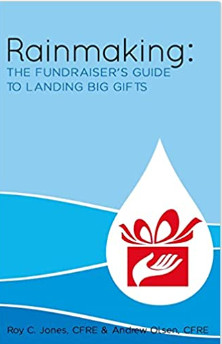Unlike most people who call themselves “fundraising counsel” I am not one who wastes a lot of time with grandiose vision papers and colorful case statements. Every January I encourage charities to spend more time on practical, actionable events rather than writing beautiful superfluous words about their organization and cause.
Yes, case statements are important, but what has been said has already been said. Do you really think that you will be more creative or more inspired than you were a year ago? Mission case statements do not come down from on high in a way that suddenly moves donors to give more. It just does not work that way.
Remember, donors do not give to case statements… they give to people. More specifically, they give to people who are listening to them and are able to identify needs that touch the donor’s heart.
Spend your time over the next few weeks outlining actionable steps you can take to know your donors better this year than last year. Better relationships with your donors will always translate into more money for your charity or cause.
Set goals based upon your actual results from last year. While we all hope that lightening will strike, you have to be realistic. Here are a few New Year’s guidelines for goal setting and planning that will make a HUGE difference on your bottom line in the new year:
- NEWSLETTER. Plan for increases of 3 to 5% – with 6 to 10 issues a year. First and foremost, make sure that everyone, regardless of suppression code, gets your newsletter. If you do not produce a newsletter, start one immediately! In addition, your newsletter should include a “lead letter” that focuses on a need presented in the newsletter and makes a “soft ask” for support. And yes, your newsletter package should have a reply device and reply envelope.
- DIRECT RESPONSE. Plan for increases of 7 to 10% – with 14 to 16 appeals a year. (The average charity in America now mails 18 times a year. ) This would be for all of your direct response channels, such as direct mail, telemarketing and digital strategies using your website and social media, do not expect to see gains bigger than 10 percent. Of course, this is contingent upon your attrition rate and the amount you are spending on acquisition in these channels to offset attrition. If you do not do enough new donor acquisition spending, only one thing is certain in direct response fundraising… attrition.
- MIDDLE DONORS. Plan for increases of 10 to 12% – with 10 to 12 appeals a year. Middle donors are donors who began giving to your organization through direct response, but through systematic cultivation, volunteering and event participation have increased their giving past the $100 threshold. Middle donor definitions vary by industry but it can range anywhere from $100 to $5,000+. Personally, I like targeting $500 to $4,999 a year as the middle donor sweet spot and begin treating any donor with a single gift of $5,000 or more as a major donor. It is critical that you begin encouraging middle donor giving through clubs or giving level recognition. While it is not a driver to get them to give more, it is a tool that keeps them from giving less and renewing more frequently. The communications needs to be different for your middle donors than your standard direct response donors. It should be consistent in the same style and tone from one month to the next. Do not go back and forth between regular donor communications and middle donor communications. Always have a “high value” copy version for your middle donors and major donor prospects.
- MAJOR DONORS. Plan for increases of 15 to 20% – with 6 to 10 appeals a year. All communications need to be in a “one-to-one” format. Nothing which appears to be mass produced (excluding the newsletter, of course) should be sent to these VIP’s. What does this mean? Real hand addressed letters, actual overnight letters by FedEx or UPS, box packages with appreciation gifts (sometimes called dimensional mail), hand addressed post notes, paper clips, and real photos – even framed. Yes, this is going to cost more per piece. These types of packages can run anywhere from $3 to $5 per piece, but the ROI is HUGE. We have seen response rates as high as 40% and average gifts of over $1,000. Treating your top 100 to 500 donors special is worth the investment. Remember, in researching your top prospects that you are looking for not only wealth, but philanthropic intent. Do they have a history of giving you large donations? Do they have a record of giving to other charities major gifts? Philanthropic intent the key to increasing major donor giving.
- DO YOUR RESEARCH. The information is available through wealth overlays and donation recognition to identify and rank you donors from 1 to 100, 250, or 500+. Rank you donors and begin meeting with your best prospects first. Finally, have a moves management plan for each individual target. I encourage folks to have a plan with timeline for each individual donor. Here is a sample of what I have adapted and used over the last few years. It was developed by my friend, Dan Shephard, during his days at Virginia Tech. Individual Donor Plan – Quadrant Analysis Template. You can reach Dan at www.TheFrontline Fundraiser.com Don’t be afraid to personalize it to your preference, but use it in the upcoming year.
- PLANNED GIFTS. Plan for increases of 10 to 15% – with 2 to 4 touches a year, usually an April 15 survey and a year end reminder. Fund raisers should seize the opportunity in the upcoming year to talk to donors who are seeing huge gains in the stock market and investments. Trust me when I tell you that estate planning support from not-for-profits is going to explode this year! Donors will work with charities they trust. I suggest a lead generation campaign that takes advantage of when tax savings are top of mind for donors: March – April and Nov – December. A letter or two during these windows will generate a lot of interest. A simple reply device to request a “free” retirement planning information will produce great results. Remember, you are targeting people who are between the ages of 60 to 80. The sweet spot is around 70 years old. If you have not done an age append on your donor file, do it. Finally, remember you are looking for people who have written the most number of checks. Frequency of giving is critical to determining the likelihood that the donor will make a planned gift or name you in their will. You are not looking for BIG check writers or major donors. You are looking for people who are likely between 65 and 75 years of age who have written 10, 25 or 50 or more checks.



